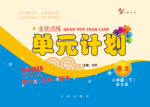题目内容
Do you want to save money when you travel by train? Here are some ways .
Day Returns:
This kind of ticket can save you 45% on the fare.You have to travel before 8.00 a.m. and after 6.00 p.m from Monday to Friday, but you can travel at any time on Saturday or Sunday.
Big City Savers(往返票):
You can save much money with these tickets.You have to buy them by 4.00 p.m the day before you travel.
Monthly Returns(优惠票):
You can use these tickets for most journeys over 65 miles. Go any day return within(在…..之内) a month. Monthly Returns can save you 25% on the fare.
Family Returns:
You can get a card of Family Returns for £20. After you buy your own ticket ,you need to pay only £3 for each of the other family members.You can travel as often as you like within two months.
1.How many kinds of tickets are mentioned (提及) in the passage?
A Two B Three C Four D Five
2.If you want to go to a city75 miles away for four days ,which kind of ticket will you choose?
A.Big City Savers B.Monthly Returns
C.Day Returns D.Family Returns
3.Mr Wu has a card of Family Returns , he buys himself a ticket of £15 and three tickets for his family,how much will he pay?
A.£ 47 B.£ 27 C.£ 24 D.£15
4.Which of the following is TURE?
A.A card of Family Returns can only be used for two months.
B.If you want to travel to Pairs by air ,you can use Big City Savers.
C.If you travel to Tokyo for three months,you can use Monthly Returns.
D.You can only use Day Returns from 8.00 a.m to 6.00 p.m at weekends.
5.The passage is likely taken from a ________.
A.dictionary B.notebook C.newspaper D.storybook
1.C
2.B
3.C
4.A
5.C
【解析】
试题分析:文章介绍了当你乘火车旅游时如何来节省费用车票的方法。
1.细节题。文章提到了四种票:Day Returns当日往返票 Big City Savers往返票Monthly Returns优惠票 Family Returns家庭优惠票 故选C
2.细节题。根据文章可知,如果你去一个75公里远的地方长达4天,你可以选择往返票,这样就可以节省25%的票价。故选B
3.细节题根据文章可知,如果你购买家庭优惠票,你购买了自己的票之后,你的其他家人每人只需要3英镑。所以,吴先生需要花费15+3*3=24英镑。故选C
4.细节判断题。本文讲的是火车票的优惠,故B错误。使用优惠票的时间是在一个月之内,故C错误。当日往返票在周末任何时候都可以。故D错误。家庭优惠票可以在两个月之内使用。故A正确。本题选A
5.推断题。这篇文章告诉我们如果更优惠的购买火车票,可推断出,它不是出自字典,笔记本,故事书,可能出自报纸。故选C
考点:日常生活类说明文
点评:本文的思路清晰,结构明确。说明文有明确的语篇结构,大意很容易把握。根据每一段的首句就可以知道整个段落的意思。对于细节题,学生在理解全文的基础上要对题目中关键字在文章中迅速定位,找到相对应的出处,答题比较备选答案的区别及和文章信息最相关的是哪个,即那个就为正确答案。

 全优点练单元计划系列答案
全优点练单元计划系列答案Who are the top students in the world, do you know? Last week the Organization for Economic Co-operation Development (经济合作与发展组织) picked the best students in the world. They are Finnish (芬兰的). The OECD gave a test to 280 000 15-year-old students from more than 40 countries and regions (地区) last year. The OECD wanted to know how well students were doing at school.
Finnish students were No. 1 in the reading test and second in maths after Hong Kong students. Those from Japan and Finland were top in science. In the problem solving, Finnish students came second to those from South Korea. The test also showed Finland had more top students than the other countries.
Finns (芬兰人) of your age have done a really good job but don't have a sense of envy. You can learn from them. Most Finnish students make good use of the Internet. Of course not for computer games, but for doing more exercises and finding out more information.
Libraries are also important. Finland spends a lot of money on them. Many students have a free card. They read for at least one or two hours a day.
What do you usually do on the Internet? How often do you go to libraries?
1.Students from which country or region did best in the reading test?
|
A.South Korea. |
B.Hong Kong. |
C.Finland. |
D.Japan. |
2.Which of the following is NOT true?
|
A.Hong Kong students were No. 1 in maths. |
|
B.Finnish students were the first of all the tests. |
|
C.Finnish students did well in the problem solving. |
|
D.Japanese students were top in science. |
3.From this passage we know that_________.
|
A.the test can make the students lose their interest in learning |
|
B.the test is designed to find out good ways to use the Internet |
|
C.it's hard to tell who the best students in the world are |
|
D.Finnish students make better use of the Internet and libraries |
 Yes, he did B. No, he didn’t C. He gave up the plan
Yes, he did B. No, he didn’t C. He gave up the plan